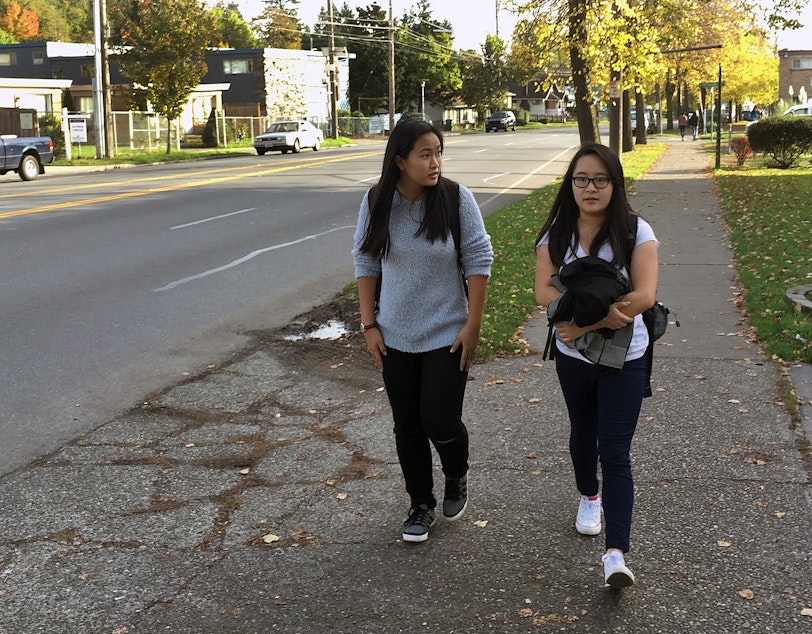These Seattle Students Are Afraid To Walk To School

When Emily Au walks to school, she worries about getting jumped – again.
Last time, it was a woman at a bus stop asking for bus fare. The woman didn’t take no for an answer.
"She snatched my backpack off my shoulders and she started digging through," Au said. "I was scared, and I thought people would come to my rescue. But nobody did.”
Au, a junior, lives within two miles from Rainier Beach High School in South Seattle. That means she’s not eligible for a school bus ride or a free bus pass. Seattle Public Schools provides those only to kids who live at least two miles as the crow flies from school.
A group of Au’s classmates are calling this an equity issue, because students in most Seattle neighborhoods walk on safer streets or have families who can drive them to school or afford bus fare. They want the district to provide free bus passes.
City Councilmember Mike O’Brien has proposed buying bus passes for low-income students who don’t qualify for them. He wants to use $1 million in the transportation budget that is earmarked for low-income transit. The council is scheduled to vote on the plan on Monday.
O’Brien recently walked to school with several Rainier Beach High students.
"It just really highlights another example of how there are disparities within the system," O'Brien said. "And if we have an opportunity to make sure every kid has access to that transit, we know that it will elevate their performance in school."
Au knows many students like her, and she says it affects their attendance. Some wait until it gets light out to walk to school. Or they skip school because they don’t feel safe walking.
School social worker Chelsea Gallegos called it a ripple effect.
“It starts with when you’re missing one or two periods each week of school – it’s very easy to fall behind,” Gallegos said. “It’s also just an issue of morale for the students."
It takes roughly 45 minutes to walk two miles, which might not be an issue in Seattle’s safer, better-lit neighborhoods. But the streets between Rainier Beach and the Othello neighborhood, where Au lives, can be treacherous.
Walking home, Au clutched her jacket to her chest like a shield. She said three of her friends have been attacked for their sneakers while walking home from school.
"This neighborhood is one of the poorest in Seattle," Au said. "There’s a lot of shootings here. There’s a lot of drug addiction and violence."
At 4-foot-11, she’s not an intimidating presence.
"I don’t like taking my time walking,” she said. “I feel safer when I’m around school, so I try to walk as fast as I can."
She often stays at school until 6 p.m., because she’s involved in after-school activities.
“It’s really, really dark, and it’s really scary, especially because I don’t know any self-defense,” she said.
Au didn’t tell her parents when she got mugged – they don’t even know she walks to school. She told them the school gave her a bus pass. Au’s mom is a seamstress at a factory. Her dad works in a restaurant kitchen.
“I feel bad that I’m lying to them, but I don’t want to take money from them. They’re my parents. Fifteen dollars a week – they can use that on something better, groceries or something like that.”
Au’s walk home takes her by a gas station on the corner of Rainier Avenue South and Othello Street, where a man was shot in the face last June.
Au said stories like that run through her mind – and the minds of her classmates – on the walk to and from school.
"Even if we look like we’re in a gang or something like that, we’re just as scared as any other person,” she said. “This neighborhood, we might have grown up with it – people may think we’re desensitized – but we’re not."

